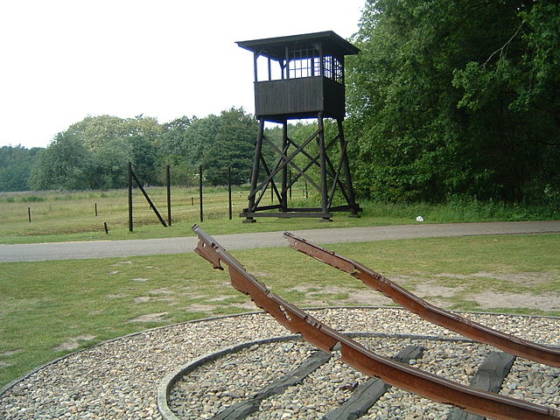Westerbork commemorates Dutch Nazi victims, new film footage shows life at the camp


The names of 102,000 Jews, Sinti and Roma who were sent to concentration camps from Netherlands will be read out at the Westerbork transit camp on Wednesday in commemoration of their fate at the hands of the Nazis.
The ceremony, which has been repeated annually since 2005, will begin at 5pm and continue non-stop until the following Monday, which is international Holocaust Remembrance Day.
January 27 also marks 75 years since the allies liberated Auschwitz, where thousands of Dutch Jews were murdered.
Some 800 people will participate in the name reading, which will begin with Auschwitz survivor Ernst Verduin calling out the first series of names. The reading will conclude with Mirjam Weitzner-Smuk, another survivor, pronouncing the final name on the list, Heinrich Zysmanowicz. Public figures, such as Job Cohen, Gerdi Verbeet and Youp van ‘t Hek as well as volunteers from all parts of society will also take part.
‘Naming the 102,000 shows this is not about a number but about 102,000 fathers, mothers, grandmothers, brothers, cousins, friends,’ the Westerbork commemoration centre said.
A live streaming of the ceremony can be seen at www.102000namenlezen.nl
Film footage
The ceremony is taking place at the courtyard used for the camp’s roll call, which features in a German propaganda film currently being restored. The first of the restored images, as well as rediscovered, more detailed footage, were shown to the press on Tuesday by war genocide study centre NIOD.
NIOD director Frank van Vree told the Volkskrant the importance of the project was ‘difficult to overestimate’.
Pointing out that the film was made for propaganda purposes, De Vree said we are looking at people in fear of their lives through a German lens.
The German perspective is revealed in footage of people taking part in leisure activities, such as sports competitions, in the courtyard and comedy shows meant to alleviate that fear by creating an atmosphere of normalcy and order.
Dutch journalist Philip Mechanicus, who later died in Auschwitz, described the event in his diary as an ‘operetta music played beside an open grave’.
However, the film also contains harrowing footage of the so-called ‘Boulevard des Misères’ from which the trains departed to concentration camps like Sobibor, Theresienstadt, Auschwitz and Bergen Belsen. It shows camp commander Albert Konrad Gemmeker, who commissioned the film.
At his trial after the war he was to say that he wanted to show ‘everything, including the sad sides of the camp so I couldn’t be said to have shown only the better sides.’
It was a comment that left all present in the court room in ‘complete confusion’, Ad van Liempt, author of a biography on Gemmeker, told the paper.
Thank you for donating to DutchNews.nl.
We could not provide the Dutch News service, and keep it free of charge, without the generous support of our readers. Your donations allow us to report on issues you tell us matter, and provide you with a summary of the most important Dutch news each day.
Make a donation